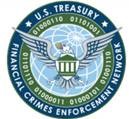FDIC and FinCEN Highlight Three Teams in Digital Identity Tech Sprint

For release
WASHINGTON – The Federal Deposit Insurance Corporation (FDIC) and the Financial Crimes Enforcement Network (FinCEN) today highlighted three teams of experts in a Tech Sprint to help measure the effectiveness of digital identity proofing—the process used to collect, validate, and verify information about a person.
Through the Tech Sprint, FDIC and FinCEN sought to increase efficiency and account security; reduce fraud and other forms of identity–related crime, money laundering, and terrorist financing; and foster customer confidence in the digital banking environment.
Nearly 60 participants were selected from more than 200 others seeking to compete in the Tech Sprint. These participants formed eight teams to present their solutions to a panel of government judges.
“We brought together a diverse collection of innovative and energetic minds to think deeply about how we can ensure bank customers are who they claim to be in our increasingly digital age,” said Martin Henning, FDIC’s Deputy Director, Operational Risk. “Helping financial institutions to stop identity fraud will help us to continue to have confidence in the safety and soundness of our banks and the integrity of the U.S. banking system.”
“We are grateful for the partnership of the FDIC and the participation of all the Tech Sprint teams. It is critical that financial institutions have reliable ways to identify their customers, particularly in our increasingly digital world,” said Him Das, the Acting Director of FinCEN. “Identity is a fundamental cornerstone of financial integrity, and identity proofing is precisely the type of complex issue that benefits from public–private collaborations like this Tech Sprint.”
Digital identity proofing is a foundational element to enable digital financial services to function properly. This element is challenged by the proliferation of compromised personally identifiable information (PII), the increasing use of synthetic identities, and the presence of multiple, varied approaches for identity proofing. The FDIC and FinCEN asked participants to answer the following question:
“What is a scalable, cost–efficient, risk–based solution to measure the effectiveness of digital identity proofing to ensure that individuals who remotely (i.e., not in person) present themselves for financial activities are who they claim to be?”
Three teams of individuals from various disciplines were selected in the following categories:
| Creativity – Team ConfIDence | |
|---|---|
| Dakota Clum, Bonifii | Nancy Guglielmo, Bank Policy Institute |
| Elizabeth Cronan, GeoComply | Tracy Manning, LexisNexis Risk Solutions |
| Michael Engle, 1Kosmos | Vadim Slavin, GlobalID |
| Candler Eve, MidFirst Bank | |
| Effectiveness/Impact – Team Heimdall | |
| Patrick Curry, Sedicii Innovations Ltd. | Stephen Ritter, Mitek |
| Casey Jennings, Seward & Kissel LLP | Greg Woolf, FiVerity, Inc. |
| Rob Leslie, Sedicii Innovations Ltd. | Lisa Zeimetz, First National Bank & Trust Co. |
| Ryan Rodrigue, Wolf & Company, P.C. | |
| Market Readiness – Team Six | |
| Daniel Buchner, Block | Megan Monroe, Block |
| Holly Kramer, Splunk | Bruce Silcoff, Shyft Network Inc. |
| Timothy Madore, HSBC North America | Jessica Winchell, Credit First National Assn. |
| Jay Meier, FaceTec, Inc. | |
Read more about FDIC and FinCEN’s Tech Sprint, Measuring the Effectiveness of Digital Identity Proofing for Digital Financial Services .
